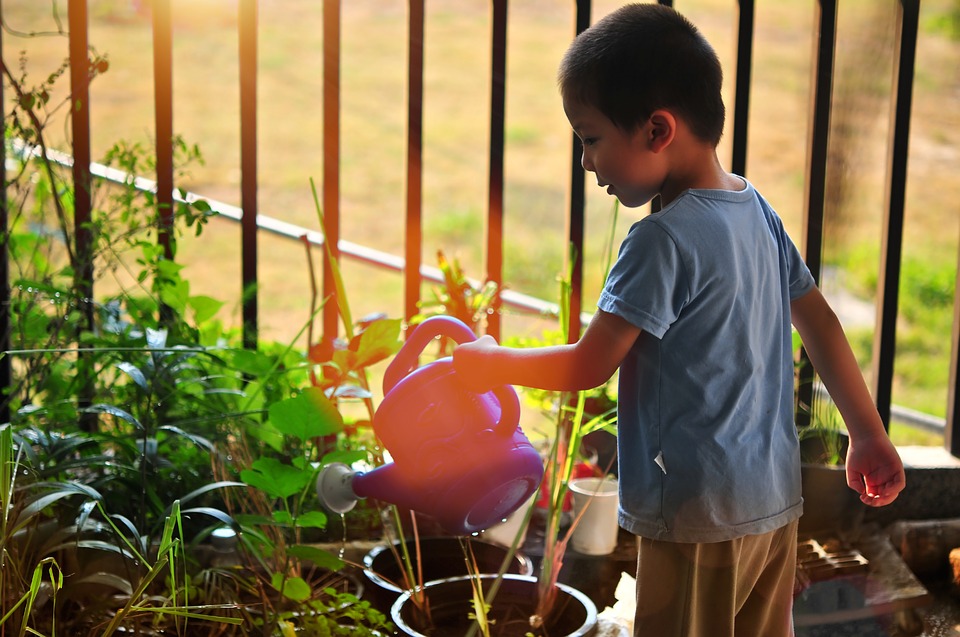A few weeks ago the inaugural Environmental Physiotherapy Association (EPA) executive committee met for the first ever online meeting to get to know each other, get an understanding of the status quo of the association 3 months after it’s official launch and plan some of the first action steps for the association. The meeting left me extremely energised and positive about the possibilities ahead, as well as the future potential of an environmentally aware and responsible physiotherapy. In very short, I think we are on the right track and can make a real difference going forward.
The EPA exec has also just met again yesterday, so the following is more so a reflection on the first meeting we had. One of the things that stood out to me the most in that first meeting were the personal stories that we all shared as we talked about our different personal and professional backgrounds, what brings us to the EPA and what motivates our interest in environmental physiotherapy. To name but a few, these included a general love for spending outdoors, joy found in gardening, memories of growing up on a farm, or growing up by the sea, memories of having to be conscious of saving water during childhood and our parents teaching us about the importance of the environment. These stories and the role they played in bringing us together seemed to me to be of notable importance.
The conclusion of the recently published 2019 report of The Lancet Countdown on health and climate change states that ‘the role of the health profession is essential—communicating the health risks of climate change and driving the implementation of a robust response which will improve human health and wellbeing.’ This underscores a general argument in planetary health and sustainable healthcare:
Communication (or education) about the link between human health, the environment and environmental degradation is one of the key tasks that health professionals can and should implement in their interactions with clients, colleagues and the public.
It seems to me that the personal stories that we shared as we introduced ourselves to each other and the role they play in bringing us together are of real importance in relation to this task and responsibility of communication. To trace how this is the case, let’s start from the following point: All of the personal stories were stories about personal connections to the environment. And what is more, I would argue that all of them where also inherently stories about links between personal health and the environment insofar as all of them invoked some kind of emotional, or psychological health and wellbeing, and included reference to some kind of physical activities engaged in, in the outdoors.
So at a baseline, I would say that this means that many of us will have something that we can talk about in terms of the relationship between the environment and personal, physical and mental health and wellbeing, irrespective of how much we know about the latest evidence on health threats and impacts that environmental degradation brings with it. I think this is really good to keep in mind. If you are lost for words, or not sure what to say when you are talking to a client or colleague and there is some kind of question around whether or not the environment is important to your and their personal health, these might be the things to think of and maybe even just the right things to reiterate to exemplify the link between health, environment, and climate change and, as equally suggested by the Lancet, make the link matter.
For a few more thoughts on using personal stories in enviro/health communication in clinical practice, read on…

Going deeper into the subject, I should add that there is maybe also a problem in our stories, because they might be more reflective of the largely privileged personal backgrounds and life circumstances that the current EPA exec comes from, than evidence of the link between health and environment being inherently positive (or, a positive experience). The picture I’ve inserted above this paragraph probably doesn’t help in this regard. So there is some question here with regard to how representative a cross-section the current members of the exec actually are with regard to ‘the north–south inequalities in responsibility for, and vulnerability to, climate change and its adverse health impacts’ that the conclusion to the 2019 Lancet report critically reiterates. It’s an issue that we will certainly have to look at. For what it’s worth though, it seemed to me that even the story that reflected on relative water scarcity invoked positive emotions, maybe in the way of vulnerability, preciousness, and (the importance of) care, but I might be reaching here.
Regardless of the type of connection our personal stories evoke between health and the environment, I think their use is also warranted in clinical practice in relation to another point raised by Prof. Hilary Graham in the accompanying podcast to the 2019 Lancet report. It is the recognition that we need to move from presenting climate change and related targets in ‘calendar time’, i.e. in changes occurring over large periods of time (because these are simply too impersonal and therefore don’t relate to people’s personal lives), to talking about health, environment and climate change in biographical, or ‘personal time… your own lifetime and the lifetime of those you care about’.
One of the points made by Graham in this regard is that most of us no longer need to look at the geological, ‘calendar time’ scale of climate change to see changes, but that we actually also have direct experiences of this in our own lives. I suspect that this is difficult to even consider for physiotherapists today, given how indoctrinated we are against the ‘anecdotal’, but to give an example from my life, this means that I remember a time when my hometown used to see fairly good amounts of snow every winter and would virtually never go beyond 30deg Celsius, but will now do the latter regularly in summer and go without snow in the winter, etc.
Sure, I might be wrong, because yes, this is anecdotal, but maybe the point is to reflect on this a little and see if you haven’t noticed some changes yourself, in your own lifetime. If so, then another interesting is to reflect on how those positive stories (let’s just say from childhood) have changed now. How much sadness and nostalgia is there maybe in reflecting on them now, precisely because, say, that forest you played in is no longer there, or the beach is full of plastic, or there is no snow where you live any longer?
And so if the stories change, maybe even in the sense that your own kids can’t tell the same stories now, then you have made an additional link, not only from (good, personal) health to the environment, but also from environmental degradation to ill (personal) health resulting from it.
And right there at that point, I would like to think that you have also moved right across to a place where there is a fairly good grounding for taking action and even doing so urgently, and all that without ever going into the often intangible and impersonal hard facts of it all or the entire climate science vs denial debate. I think this is really worth keeping in mind and can be a really positive tool in day-to-day clinical enviro/health communication.
Read on, there’s just a little more… 😉

To be clear, I am neither trying to say that we should not use the science behind it all or, for that matter, that we should only ever talk about the positive links and stories that we can draw between health and the environment. There is no doubt that we need the science and also need to be very clear, upfront and honest about the darker and frightening sides of the story. As far as I am concerned, the real trick is finding the right balance for motivating and mobilising action.
It has already been pointed out that both the science, as well as the disaster, or emergency messaging can often cause friction between people that can hamper action and, in the most unfortunate of cases, even denial and resistance. Contrary to this, it seems to me that personal stories of our experiences of and love for the environment are much more non-partisan and therefore, rather than increasing division, much more likely to bring us together in a way that can more positively transform into (mass) action. They are the human link so to speak.
Foregrounding these personal, or human aspects in enviro/health communication is also supported by the six principles of the UN Communications Handbook for IPCC scientists (2018), which state that effective communication and public engagement on climate change should involve ‘talking about the real world, not abstract ideas’, ‘telling human stories’, and ‘connecting with what matters to your audience’, as well as the call to ‘put a human face on climate change’.
So the simple key point here is that personal stories have a really important place in enviro/health communication. They provide directly relatable access to the good, the bad, and the necessary. I think they are, ultimately, also the vines (not glue..) that hold all enviro/health action together, the common ground upon which we can all meet, irrespective of political orientation, and from which we can all take action – together.
Filip Maric (PhD)
Filip Maric is a physiotherapist and researcher interested in the outer rims of healthcare and pt, practical philosophy, ethics, #EnvironmentalPhysiotherapy, planetary health and sea kayaking.
Twitter: @filipmaricpt

